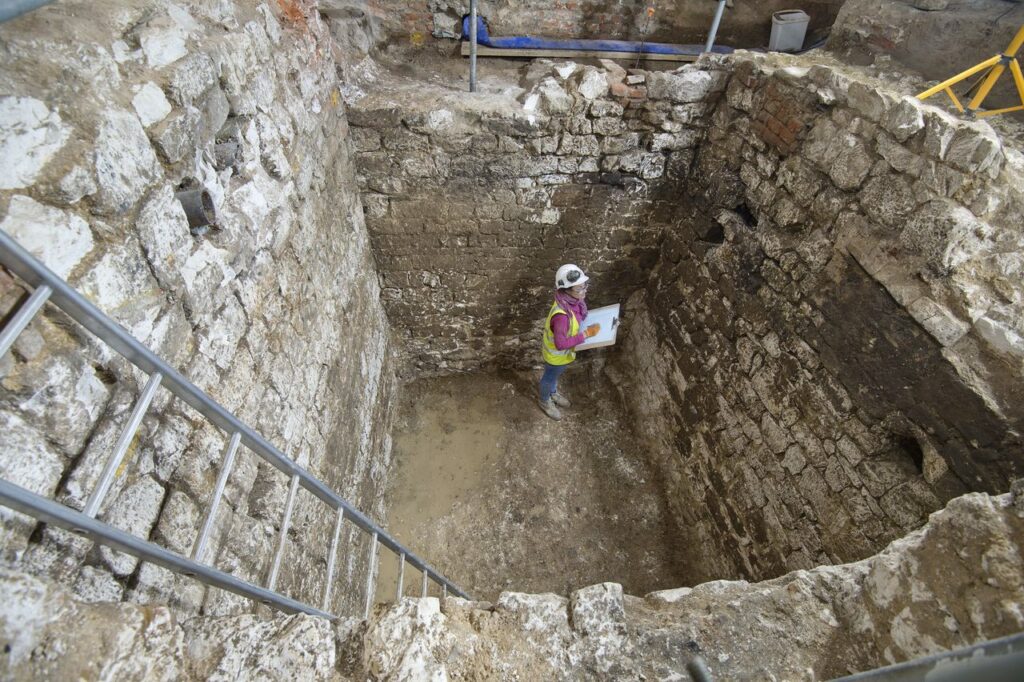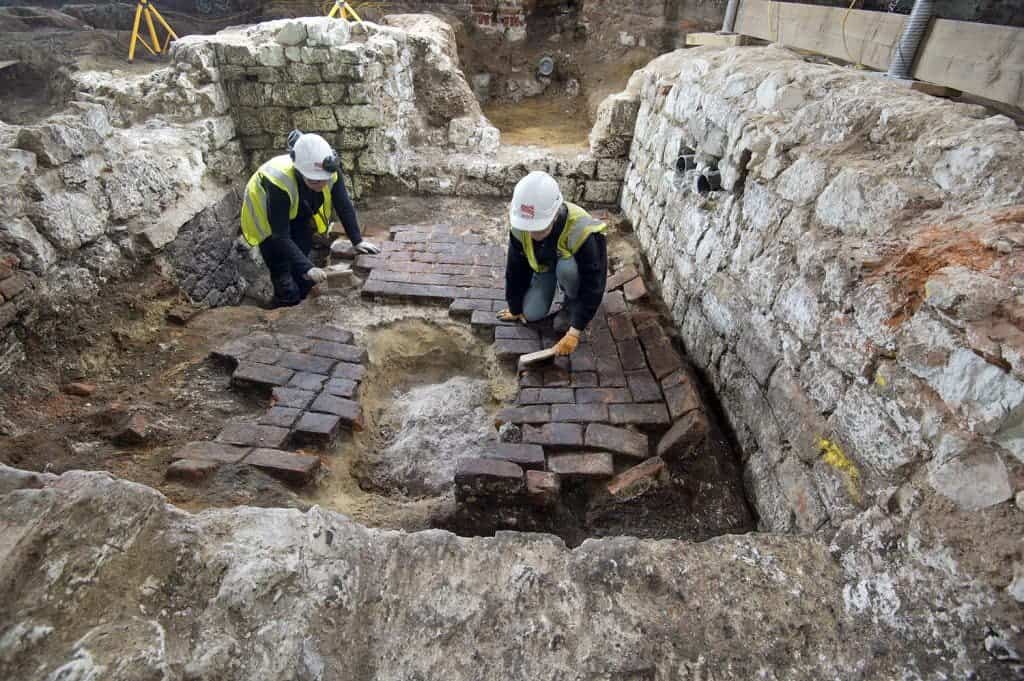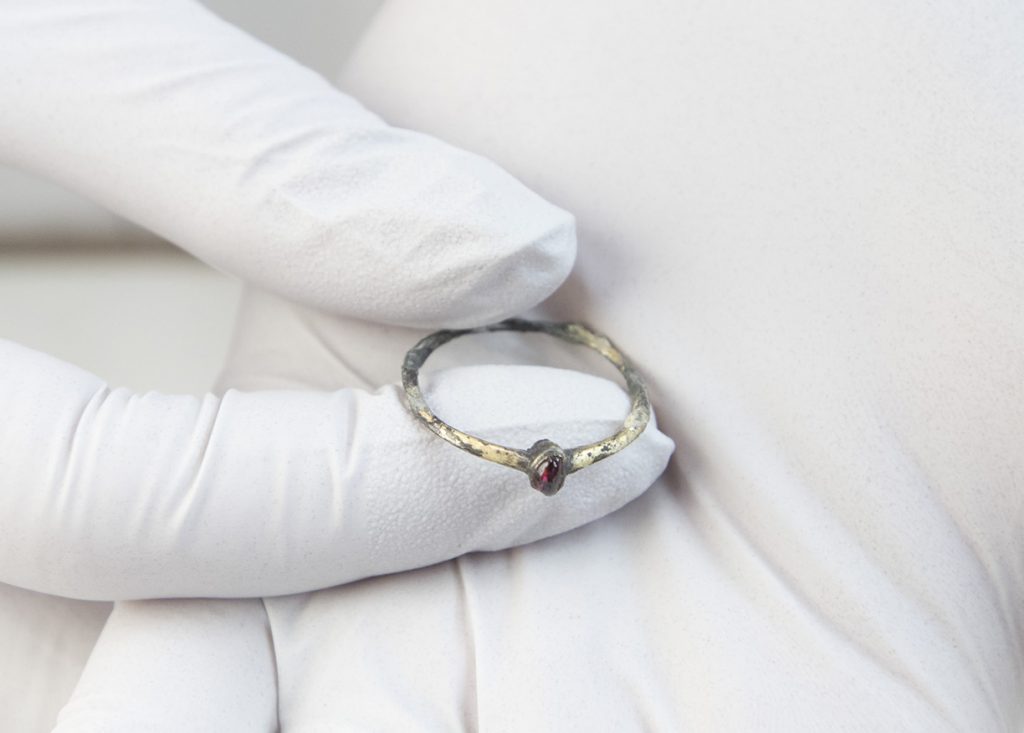Construction workers in London are used to finding strange things. But they weren’t really expecting a giant medieval cesspit — right in the place where they were building a new one.

The Courtauld Gallery is an art museum in the heart of London. It is best known for its French paintings but also hosts works from the likes of Van Gogh, Botticelli, and Peter Paul Rubens. The gallery is housed in an 18th-century building — and as is often the case with historic buildings, renovations are sometimes in order. The Courtauld Gallery was fortunate in how they chose the period for renovation (since 2020 seems like closed-up anyway), but as it turns out, they got a bit more than it bargained for.
When researchers dug into the site to see how the subsurface looks, things got a bit… smelly. They found the remains of a stone structure, but it was an unusual one. It didn’t look like a hall or a house or anything you might expect. It kind of looked like a tower, but not really — and in central London, you’d not expect a tower to go unnoticed. But as they started digging more, the smell gave it away.
Turns out, they came across a medieval cesspool, and a pretty huge one at that. Far from being disgusted, they were thrilled.
“We had no idea,” says Stephanie Hall, the Courtauld’s project director overseeing the revamp.
The structure was lined with chalk and had several brick flooring layers. Then of course, there was the… filling. It wasn’t exactly poop. It was a bit like muck, brown-green, and the deeper they dug, the worse the smell got.
“I think the word ‘slime’ has been bandied about,” Hall says. The feces itself had returned to earth, but it was still foul, “like a big gaping maw that emitted a slightly fetid breath.”

It’s one man’s cesspit but another man’s treasure
Life wasn’t very pleasant in medieval London — though to be fair, it probably wasn’t very pleasant in medieval anywhere — and public cesspits are a testament to that. For many Londoners, toilets were a luxury. They had to either improvise or settle for one of the several communal cesspits in the city. These cesspits were essentially large holes in the ground where people would do their thing. Most of them have (thankfully) disappeared from present-day London, but apparently, this one was still in hiding.
It wasn’t your average cesspit, either. Judging by its construction, it can be dated to Saxon times, meaning that it had been in use for centuries (when cesspits become full, they were either abandoned or cleaned by some poor soul).
But these old pits are a gold mine for archaeologists. They hold clues to historic diets and health. Seeds that survived digestion might indicate which plants these ancient Londoners ate, and parasite eggs could indicate health problems. It’s also not uncommon for cesspools to hold artifacts. People would throw in unwanted objects, and if something fell through, nobody was going back to get it.
The team found over 100 objects dating from the 14th to the 16th century. Among them, a bone-handled fork, an iron boot spur, and even a gold-plated ring, whose provenance is still a mystery. They also found some grislier things: like the crushed head of a horse, presumably abandoned after it was carved for meat. The entire skeleton of a little dog also hints at a dark event.

It wasn’t easy to explore the place, but at the end of the day, it was worth it.
Old poop, new poop
Even the people that knew the place best were shocked by this archaeological find, which will be incorporated into the museum — to an extent. The site has been entirely cleaned up and will be covered in polystyrene, not visible glass. The visible glass would have left the structure visible for visitors, but some archaeologists are starting to avoid this approach out of the fear that it could fuel bacterial growth. Nevertheless, the museum will present this structure as part of the building’s history.
Professor Deborah Swallow, Märit Rausing Director of The Courtauld, explains:
“The Courtauld is currently undergoing the most ambitious programme of development in our history, and we were fascinated to find that the building work had led to the discovery of these extraordinary objects in the foundations of our gallery. We are delighted that these discoveries will shed more light on the fascinating history of this building. The first phase of the refurbishment of The Courtauld will continue throughout this year and I look forward to welcoming back our visitors and students to The Courtauld Gallery at Somerset House in Spring 2021 where they can enjoy these remarkable artefacts and the history they reveal for themselves.”

It’s also a notable coincidence that the old cesspit is in the exact place where a new toilet was planned.
MOLA Senior Archaeologist, Antonietta Lerz, concludes:
“It’s an amazing coincidence that on excavating the exact spot of the new Courtauld Gallery toilets, we found not just one, but two ‘toilet precursors’ which document the less glamorous side of almost five hundred years of luxury life alongside the Thames. It’s also remarkable that the structure remained in use for over 400 years, as the original medieval cesspit was converted into a cellar by the 17th century and a series of successive brick floors were then laid down, the latest dating to the 18th century when a small latrine was inserted in the corner. This is certainly not your typical find and represents a fascinating glimpse into the many levels and layers of history beneath the current building.”
The museum will be visitable in 2021 — assuming, of course, that the pandemic situation allows it.






